Samavartan (Sodamunja) – Fifteenth Sanskar
Return of the student who has accepted Brahmacharyavrat, from the home of his Guru to his own, is called Samavartan or Sodamunja.
The ritual
The following acts are performed amidst recitation of mantras- wearing clothes, applying kajal (Lampblack), wearing earrings, wearing a flower garland, wearing footwear, holding an umbrella and a staff and wearing a gold bead. Now as the boy is returning to gruhasthashram this ritual teaches him to live like one.
Snatak (Graduate)
Meaning
‘Sometimes time elapses between completion of education and the marriage of a man. This intervening state is referred to as snatakavastha. It is the transient stage between that of a celibate and a married householder. After the ritual of Samavartan, till marriage the dwij is a snatak.
Types
Vidyasnatak, vratasnatakand vidyavratasnatak are the three types of snataks. The one who completes the study of the Vedas within twelve years and undergoes Samavartan is a vidyasnatak; the one who undergoes Samavartan after undergoing the Upanayan sanskar and performing the Savitrivrat and Vedavra tis a vrata snatak ; and the one who undergoes Samavartan after completion of the entire period of celibacy and the study of the Vedas is a vidyavrata snatak.’
Norms to be followed by a snatak
A. ‘I will not bathe in the nude without reason in the evening or night.
B. Except during intercourse, I will not look at a nude woman after marriage.
C. I will not travel or run in the rain.
D. I will not climb trees.
E. I will not climb down into a well.
F. I will not swim across a river.
G. I will not perform any act, which in my opinion is likely to endanger my life.
I will abide by these rules. After making this sankalpa, the loin cloth and girdle of the batu should be removed.
Observing mourning
After performing the thread ceremony, in the stage of celibacy if any relative expires, after his Samavartan the boy should observe mourning (also known as ashoucha) only for three days. Even if more than one relative has expired during this period, then mourning has to be observed for only three days.

 Garbhadhan (Rutushanti) – First Sanskar
Garbhadhan (Rutushanti) – First Sanskar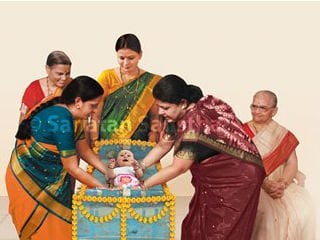 Namakaran (Naming ceremony)
Namakaran (Naming ceremony)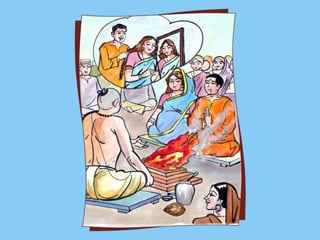 Simantonnayan (Parting the wife’s hair) -Third sanskar
Simantonnayan (Parting the wife’s hair) -Third sanskar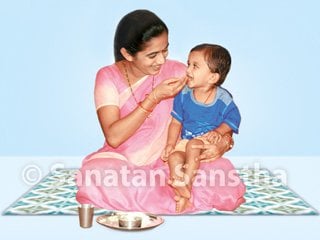 Sanskars performed after the birth of a child ! (Fourth, Fifth, Sixth and Seventh Sanskar)
Sanskars performed after the birth of a child ! (Fourth, Fifth, Sixth and Seventh Sanskar)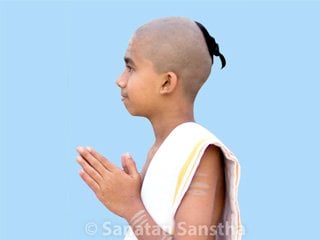 Choulkarma (Chudakarma) – keeping a shendi !
Choulkarma (Chudakarma) – keeping a shendi !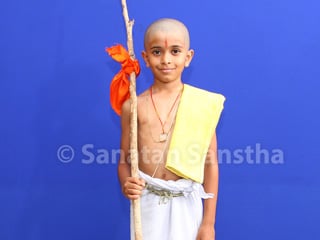 Upanayan (Vratabandha, Munja) – Ninth Sanskar
Upanayan (Vratabandha, Munja) – Ninth Sanskar